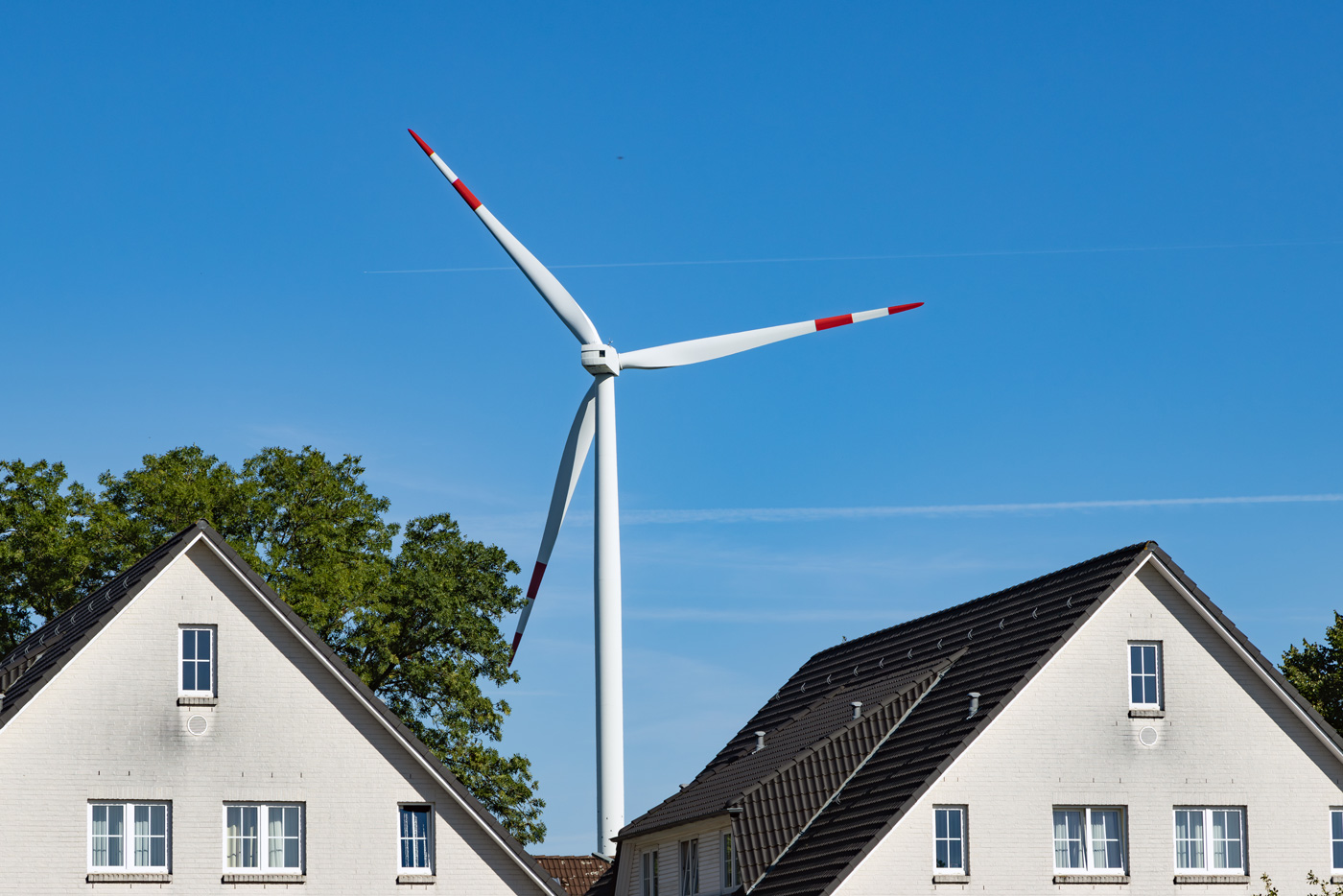
The values of houses in the United States within a wind turbine’s viewshed drop only slightly and temporarily due to the disrupted view, a new study published today in the Proceedings of the National Academy of Sciences (PNAS) shows. The effect is smaller the further away the recently installed turbines are and fades over time.
The researcher’s findings shed light on the dynamics between renewable energy infrastructure and local property values, providing valuable insights for sustainable and community-friendly energy development.
“The impact of wind turbines on house prices is much smaller than generally feared: In the U.S., it’s about one percent for a house that has at least one wind turbine in a 10 km radius,” explains Maximilian Auffhammer, a professor in the Department of Agricultural and Resource Economics (ARE) at the University of California, Berkeley and co-author of the study. “And what really surprised me is that the house value bounces back to the original price over the years.”
The study authors also found that there was no longer any effect for wind turbines built after 2017, which they suggest could be because people have gotten used to these new structures in their environment over time.
300 million home sales; 60,000 wind turbines
Wind power is one of the fastest-growing renewable energy sources worldwide. Yet, the implementation of wind energy infrastructure often faces significant challenges from local communities, partly from the perceived discomfort of having to see wind turbines and the assumed implications for property prices.
To find out whether the construction of a new wind turbine in the vicinity of houses influences the value of homes, scientists from the German Potsdam Institute for Climate Impact Research (PIK), the Italian Centro Euro-Mediterraneo sui Cambiamenti Climatici (CMCC) and the University of California, Berkeley analyzed the majority of home sales in the U.S. in the last 23 years. The researchers statistically analyzed data from more than 300 million home sales and 60,000 wind turbines from 1997 to 2020 to discern the impact of wind turbine visibility on home values.
“Unlike previous studies, we did not only consider proximity but also the actual visibility of wind turbines,” says Wei Guo (PhD '23 ARE), a CMCC researcher and first author of the study. “We calculated whether you can see the turbine–or whether there is a mountain in the way, for example–and if so, how the house value changes compared to other houses in the same area that cannot see the wind turbine.”
More informed decision making
The results clearly show that the negative economic effect of wind turbine visibility decreases as distance increases: the value of a house can drop by up to 8 percent when a wind turbine is built less than 2 kilometers away. Yet, the researchers note that only a tiny fraction of properties are actually built within this distance: In the U.S., less than 250,000 buildings are constructed within 4 km, compared to about 8.5 million properties within 10 km.
Even then, the study shows that the effect diminishes over time along two dimensions. First, the immediate decrease in property value peaks three years after installation and then bounces back to its original value. Second, more recently installed wind turbines have a smaller negative effect on property values. Both findings suggest that people get more and more accustomed to wind turbines.
“Our research responds to some arguments of local opposition against wind turbines, the classic 'Not In My Backyard' problem that is a hot topic not only in the U.S. but also in Europe and Germany,” explains Leonie Wenz, PIK scientist and co-author. “In the big picture, it’s about finding a balance between the global climatic benefits of renewable energy and the local impacts on communities nearby. Our estimates of how wind turbine visibility affects house values could be a basis for compensating local homeowners. However, our study also underlines that these impacts have been small in the last two decades, and that we can expect them to become even less of an issue in the future.”
This press release was prepared by the Potsdam Institute for Climate Impact Research.
Read More
